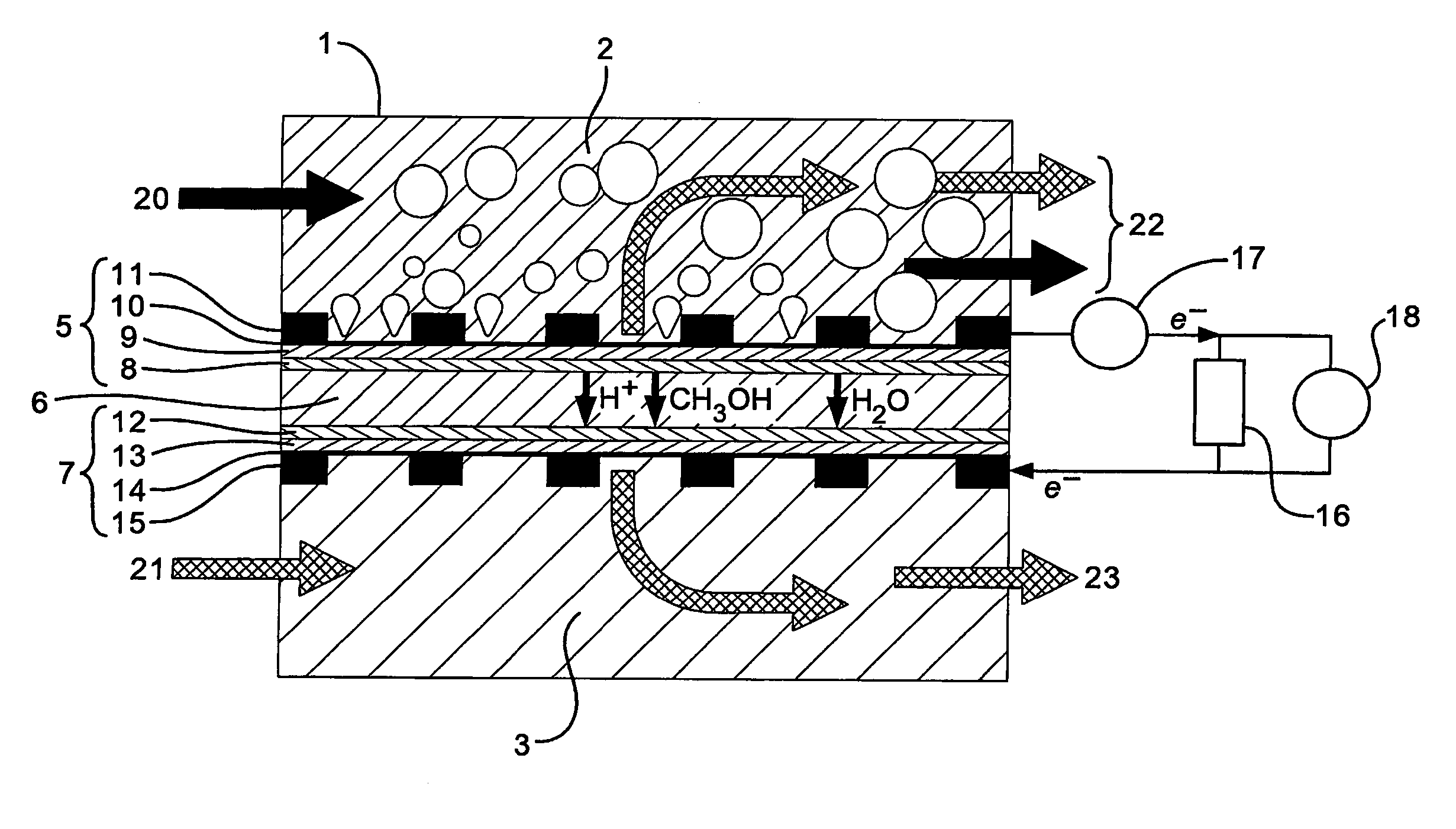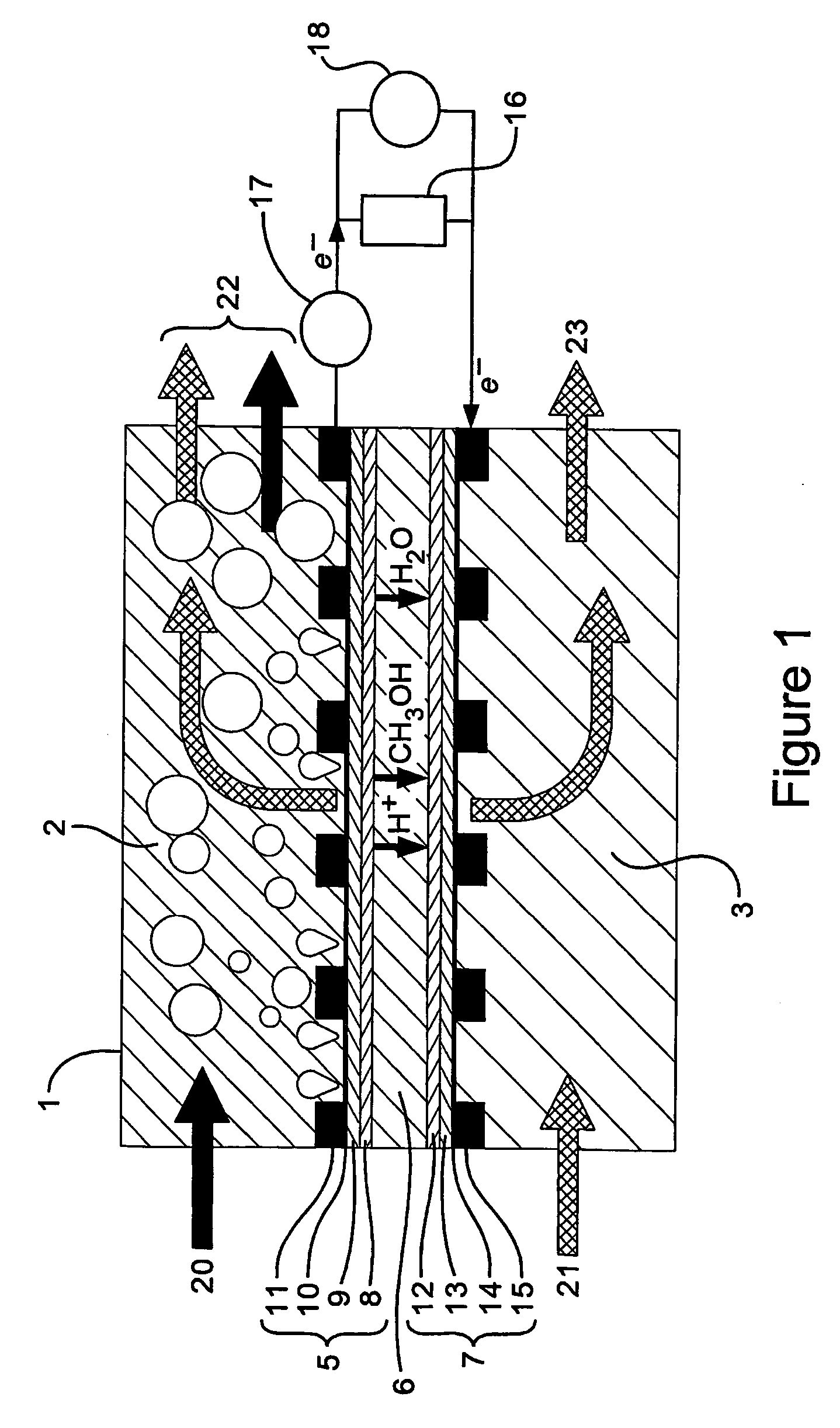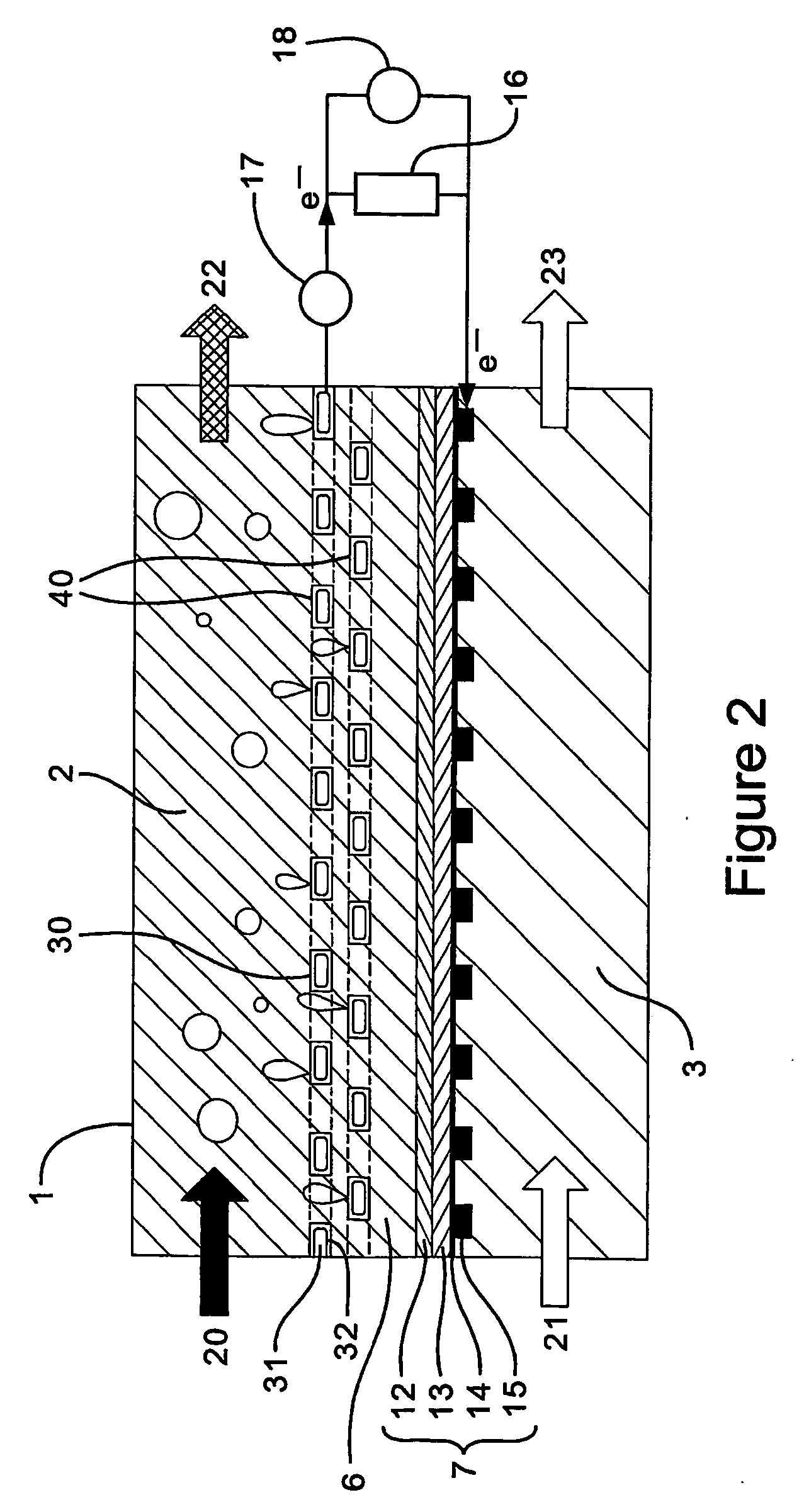Fuel cell electrode
- Summary
- Abstract
- Description
- Claims
- Application Information
AI Technical Summary
Benefits of technology
Problems solved by technology
Method used
Image
Examples
example 1
Operation of Membrane Electrode Assembly
[0108] The following MEAs were prepared:
MEAAnodeFormed byCathodeFormed by1PtRu Ti mesh 3ThermalPtChemical(1:1 1.5 mgcm−2)deposition(0.4 mgcm−2)deposition2PtRu Ti mesh 3ThermalPt on ADPChemical(1:1 1.5 mgcm−2)depositionmembranedeposition(1.1 mgcm−2)3PtRu Ti mesh 3ThermalPtChemical(1:1 1.5 mgcm−2)deposition(0.4 mgcm−2)deposition4PtChemicalPtChemical(0.645 mgcm−2)deposition(0.7 mgcm−2)deposition5PtRu Ti mesh 3ThermalPtChemical(1:1 1.5 mgcm−2)deposition(0.4 mgcm−2)deposition6PtRu Ti mesh 3ThermalPtChemical(1:1 1.5 mgcm−2)deposition(1.1 mgcm−2)deposition
[0109] The MEAs were conditioned for 48 hrs in a test fuel cell at 75° C. and atmospheric pressure with a continuous feed of 2 M methanol. The MEAs were then tested in an alkaline fuel cell at different conditions to ascertain reproducibility of their performance.
[0110] The alkaline fuel cell uses methanol as a fuel in an alkaline sodium hydroxide solution. The structure of the fuel cell is as d...
example 2
Effect of Mesh Structure on Performance
[0121] Three mesh electrodes having a rhombus pore shape and each having a different pore size and strand width were prepared using the thermal decomposition method described above and are shown in FIG. 6. The Ti mesh electrodes were coated with PtRu (Pt:Ru=0.5:0.5 in atomic ratio). The geometric parameters of the three mesh electrodes are listed as in Table 1, and SEM images of the meshes are shown in FIG. 6. The pore size dimensions LWD and SWD are illustrated in FIG. 6 and correspond to the long and short dimensions of the rhombus pores.
TABLE 1ParametersMesh 1Mesh 2Mesh 3Pore sizeLWD / mm1.2810.52SWD / mm0.720.640.36Strand width / mm0.140.180.08
[0122]FIG. 7 shows the galvanostatic performance of the different electrodes in 2 M MeOH+0.5 M H2SO4 at 60° C. The galvanstatic performance of an electrode is a measure of the steady state current density as a function of electrode potential. The PtRu catalyst thermally deposited on Ti mesh 3 possesses t...
example 3
Comparison of Conventional Fuel Cell with Ti Mesh Fuel Cell
[0123] A fuel cell according to the present invention comprising an electrocatalyst coated Ti mesh was compared with a conventional fuel cell comprising a carbon cloth electrode gas diffusion electrode.
[0124]FIG. 8 shows two cell voltage versus current density curves obtained from a flow DMFC operating with two anode structures: a Pt—Ru / Ti mesh anode according to the present invention made by thermal deposition, and a conventional Teflon bonded carbon cloth gas diffusion anode. Each has a catalyst loading of 2 mg Pt+1 mg Ru cm−2. The cathode was a conventional carbon cloth arrangement in both cells. FIG. 8 was obtained by flowing a 2 M methanol solution at 90° C. to the anodic chamber and by passing 1.5 bar air into the cathodic chamber, and recording the cell performance with each of the anode structures.
[0125] The anode structure according to the present invention comprises a membrane electrode assembly comprising a PtR...
PUM
 Login to View More
Login to View More Abstract
Description
Claims
Application Information
 Login to View More
Login to View More - R&D
- Intellectual Property
- Life Sciences
- Materials
- Tech Scout
- Unparalleled Data Quality
- Higher Quality Content
- 60% Fewer Hallucinations
Browse by: Latest US Patents, China's latest patents, Technical Efficacy Thesaurus, Application Domain, Technology Topic, Popular Technical Reports.
© 2025 PatSnap. All rights reserved.Legal|Privacy policy|Modern Slavery Act Transparency Statement|Sitemap|About US| Contact US: help@patsnap.com



